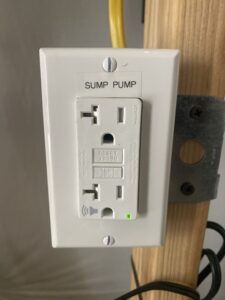THOF (Thermoplastic High Temperature and Oil Resistant Flexible) cable is a specialty cable designed for industrial applications that require flexibility, high temperature resistance, and resistance to oils and other materials. The cable is commonly used in ship-to-shore power transmission. It typically features EPR thermoplastic insulation and a neoprene jacket that provides these properties. It also has a tinned copper conductor that performs in corrosive environments. The cable is often used in conditions where high temperatures and exposure to oil or chemicals are expected, such as motors, transformers, and machinery in manufacturing settings. THOF cables under the M915E/6 standard are suitable for military marine applications.
The main characteristics of THOF cables include:
Temperature rating: Typically designed for continuous operation at temperatures up to 105°C.
Oil resistance: It is designed to withstand exposure to oil, lubricants and other chemicals, ensuring long-lasting durability in harsh environments. It is also ideal for use in saltwater.
Flexibility: They are typically manufactured with a braided connector for enhanced flexibility, allowing for easy installation in tight or complex routing scenarios.
Voltage rating: They are often used in low to medium voltage applications, typically up to 600 volts.
THOF cables are a good choice for applications that require strong performance in harsh industrial conditions.
THOF cables in marine environments
THOF cable is typically used as ship-to-shore cable.
This includes:
Power distribution on board: This includes things like engine rooms, control panels, lighting systems, and auxiliary machinery.
Marine Engines & Machinery Offshore Drilling Rigs Port & Harbor Infrastructure Submersible Pumps & Underwater Applications
THOF Cables vs Other Cables
THOF (thermoplastic high temperature oil resistant flexible) cables have special properties that set them apart from others. Below is a comparison of THOF cables with some of the cable types commonly used in similar industrial and marine environments:
THOF Cables vs SOOW Cables
Construction: THOF: Typically features EPDM insulation with a chloroprene sheath, designed for higher temperatures, chemical resistance and flexibility.
Good: Made of tough thermal insulation and a tough thermal jacket, providing resistance to oil, water and corrosion.
Voltage Rating: THOF: Designed for 600V or 2000V, making it suitable for medium voltage applications.
Good: They are typically rated for up to 600 volts.
Flexibility and Usability: THOF: More flexible and suitable for applications that require continuous winding, such as cranes, hoists and heavy machinery.
Good: Often used in portable tools, motors, and temporary power installations.
Applications: Both are oil resistant and flexible, but THOF is preferred for more demanding environments that require higher temperature tolerance and improved mechanical durability.
THOF Cables vs RHW-2 Cables
Construction: THOF: EPDM rubber insulation with chloroprene for superior environmental and mechanical resistance.
R.H.W-2: Cross-linked polyethylene (XLPE) insulation has high resistance to moisture and chemicals.
Temperature Ratings: THOF: Designed for continuous operation up to +90°C.
R.H.W-2: They are typically rated to withstand up to +90°C in wet or dry conditions.
Applications: THOF: Ideal for tough, flexible installations in industrial and marine environments.
R.H.W-2: It is commonly used in building wiring and underground installations, where moisture and chemical resistance is key.
overlap: Both cables offer heat and chemical resistance, but the added flexibility and durability of THOF makes it better for applications that involve constant movement.
Comparison of THOF, Type G and G-GC cables
Construction: THOF: Flexible tinned copper conductors with EPDM and chloroprene layers.
Type G/G-GC: Made with rubber insulation and jackets, with a focus on harsh environments.
Voltage Rating: THOF: Up to 2000 volts.
Type G/G-GC: They are typically rated at 600 volts, but the G-GC can handle up to 2000 volts.
Flexibility and Usability: THOF: High flexibility with reinforcement layers for heavy duty mobile applications.
Type G/G-GC: They are also flexible and durable, and are mainly used in mining and industrial power distribution.
Applications: While both types of cable are heavy duty, THOF cable is more suitable for marine and coastal applications, while G-GC cable is better for mining and heavy industrial machinery. THOF cable is also more flexible, while G-GC cable is more durable.
THOF Cables Available at NNC at great prices.




